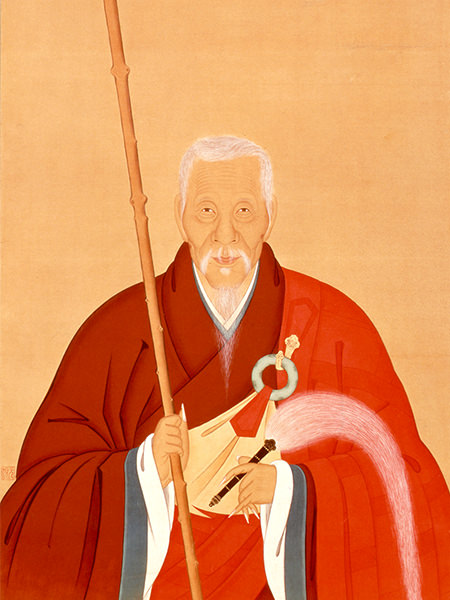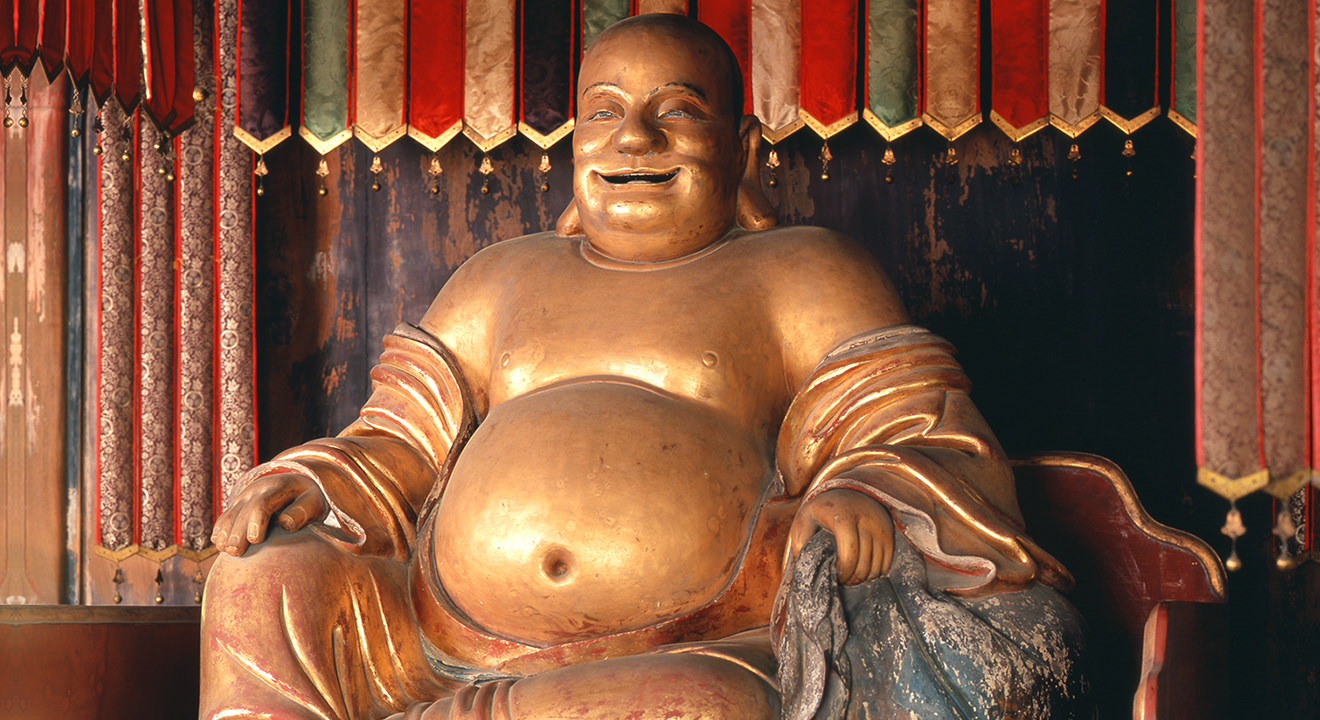The fact is, almost every object in our lives is affected by generative A.I. and machine learning — whether in its design, manufacturing, marketing or shipping. The question is no longer whether these new technologies touch something, but to what degree.
After his gold trinkets were rejected, the author paid for his lunch in cash.
I replaced the Netflix recommendation algorithm with my high school English teacher, a film buff. Before my experiment, I had emailed him for a suggestion. He responded: “Currently re-exploring Robert Altman — ‘Brewster McCloud’ … whoa.”
I had ordered this 1970 movie on DVD, and now I watched it on a portable DVD player we had neglected for two decades. “Brewster McCloud” was bizarre and whoa-worthy, and I was glad to be out of my Netflix bubble.
My next errand was walking our dog. Before leaving the apartment, I put on my anti-facial recognition sunglasses.
As Elizabeth Daniel Vasquez, a privacy advocate, wrote in The New York Times last month, the streets of Manhattan are monitored by thousands of security cameras, some operated by the New York Police Department, others by private businesses. After a suspected crime, the N.Y.P.D. can search the footage using A.I.-powered facial recognition software.A portable solar generator powers a DVD player. Facial-recognition-defying glasses kept the author safe from prying tech.
There is also the small — for now — threat of homemade facial-recognition systems. Last year, two Harvard students hacked Ray-Ban Meta glasses to include software that identified passers-by. So just by strolling on the Upper West Side, I risked interacting with A.I.
Hence, my Ghost sunglasses. I had bought them from Reflectacles, a privacy-protection company. The white frames and yellow-tinted lenses defy facial recognition cameras by blocking the infrared light they use to map our features. I relished the feeling of slipping under the radar.
“Hey, Elton!” one of my neighbors greeted me.
Back home, I had to make a phone call — a tricky undertaking, since the iPhone uses machine learning for noise suppression and energy efficiency.
Julie retrieved a landline telephone, curly cord and all, from a storage locker in the basement. It wasn’t a perfect solution — Verizon uses A.I. to predict damage to its fiber lines — but it ranked lower on my A.I. scale than a smartphone.
My plan was to attempt a herculean feat: To find an actual human being at eBay customer support who would talk to me about a lost order. I had paid for a vintage 1990s bike, which failed to arrive. That’s why I had settled for riding my son’s 2022 bike on Day 1.
First, I needed the number for eBay headquarters. I called 4-1-1.
“City and state, please,” said a robotic voice.
“Can I talk to a human being please?” I replied. Voice-recognition programs rated an 8 on my scale — they run on A.I. programs trained on millions of spoken words.
Image
Trying to reach a human being at eBay via landline.
Moments later, a different voice said: “City and state, please.”
“Are you a human being?” I asked.
“Yes, I am.”
“Me, too!”
Silence. I requested the number for eBay. While the operator was looking it up, I asked, “By the way, what kind of people still call 4-1-1?” Silence. Then a robotic voice gave me eBay’s number.
Things went downhill from there. The eBay phone tree flat-out refused to connect me to a non-robot.
I spent the final hours of my experiment trying to draft this article. I couldn’t use my MacBook Pro, since it’s loaded with machine learning features, including a trackpad trained to ignore accidental brushes with my palm.
I got down to work on a typewriter I had bought days earlier. I loved the clackety-clack sound, but the ribbon was low on ink.
I switched to pencil and paper, despite my worry that the manufacturers of those simple writing tools were among the 51 percent of companies that use A.I. in hiring, according to a survey by Résumé Builders. Since my solar-power box had run out of juice, I wrote by candlelight. It was kind of soothing.
I checked the notes I had printed out before the start of my experiment. And here’s where I should make a confession: Some of my research came from ChatGPT. I’m part of a majority of journalists whose work has been changed by A.I. I gave it prompts such as “How does the Parks Department use A.I.?”, which led me to the tree census, for one thing.
So how am I feeling in these last few hours? A little unsettled by just how prevalent A.I. is. I’d like more transparency. It seems important to know when an image or email is A.I.-generated. And I’d like more control over the algorithms that influence my life.
I’m also less sure about how the world will look in five years, but more certain that A.I. will be increasingly involved. “We’re just at the beginning of the A.I. Era,” said Mr. Wilser, the “AI-Curious” host. On the spectrum of A.I.-is-glorified-spell-check to A.I.-is-bigger-than-fire, the project has moved me slightly in the bigger-than-fire direction.
If I were to write a sequel to this story in five years, I would have an even more difficult time. Or, as Jeff Crume, a scientist who makes popular A.I. explainer videos, put it: “You mean when ChatGPT writes a sequel to this article in five years?”
「黃檗」可以指:
植物:
一種芸香科黃檗屬的喬木,其樹皮是中藥材「黃柏」(俗稱黃檗),具有清熱解毒等功效,也稱作「黃柏」。
佛教宗派:
日本佛教禪宗的一個流派,由明朝僧人隱元隆琦東渡日本後創立,以京都宇治市的萬福寺為本山。
黃檗山萬福寺「日本最大的中國式寺院」
京都黃檗山萬福寺是黃檗宗的大本山,在全國擁有約400個末寺。黃檗宗是日本三大禪宗(臨濟宗·曹洞宗·黃檗宗)之一,設有專門道場。黃檗宗的儀式作法沿襲了明代的佛教儀禮。黃檗山的建築物是採取中國明朝樣式的伽藍配置。在日本,像這樣將創建時的模樣保留至今的寺院,萬福寺是僅有的。寺院內的主要建築物有23棟,回廊、匾額、聯等被指定為國家的重要文化財產。
關於萬福寺與隱元禪師
 隱元隆琦像 喜多原規筆【重要珍貴文化遺產】
隱元隆琦像 喜多原規筆【重要珍貴文化遺產】
關於萬福寺的開創
隱元隆琦是萬福寺的開創者。隱元和尚是中國明代末期臨濟宗的代表費隱通容和尚的法嗣,是臨濟正傳32世的高僧。中國福建省福州府福清縣黃檗山萬福寺的住持。受日本方的多次邀請,於日本承應3年(1654),63歲時率弟子20名左右來到日本。隱元和尚編輯了被稱為受戒入門書的《弘戒法儀》,併發行了有關黃檗宗內的儀禮和規則的《黃檗清規》一書。叢林規則由此一變,推動了停滯的日本禪宗的興盛,可稱之為日本禪宗的中興之祖。德行兼備的隱元和尚在物質和精神兩方面對日本文化的發展做出巨大貢獻,也由此被皇室下賜國師稱號或大師稱號。
關於國師稱號·大師稱號
寬文13年(1673) 後水尾法皇 大光普照國師。享保7年(1722) 靈元上皇 佛慈廣鑑國師。明和9年(1772) 後桃園天皇 徑山首出國師。文政5年(1822) 仁孝天皇 覺性圓明國師。大正6年(1917) 大正天皇 真空大師。昭和47年(1972) 昭和天皇 華光大師。皇室對外國僧人下賜國師稱號是非常罕見的。由此可見隱元和尚的德行備受歷代天皇的推崇。
關於隱元和尚帶來的文化恩惠
隱元和尚帶到日本來的文化廣泛涉及美術、醫術、建築、音樂、史學、文學、印刷、煎茶、普茶料理等各各方面。不僅是宗教界,可以說對當時整個江戶時期的文化帶來了全面的影響。除此之外,隱元和尚還帶來了隱元豆、西瓜、蓮根、孟宗竹,木魚等。甚至諸如明朝體、原稿用紙等我們平時看到的用到的東西,都可追溯到隱元和尚那裏。
人名:
唐代一位重要的禪宗高僧「黃檗希運」的簡稱,他創立了黃檗山,並對禪宗發展有重大貢獻。

沒有留言:
張貼留言